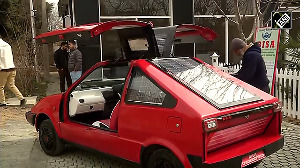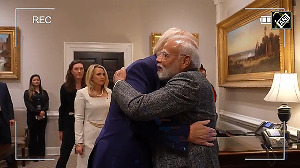The new tax regime has also been fuelling sale of SUVs, particularly the compact SUVs

Small is no longer beautiful for car buyers in India.
Though overall passenger vehicle sales in one of the fastest expanding automobile markets of the world have been growing year-on-year, small car or hatchback sales have remained neutral for most part of the decade.
Passenger vehicles sales in India advanced 27 per cent to 3.3 million in 2017-18 from 2.6 million in 2011-12.
But hatchback (includes entry-level cars and premium small cars) sales dipped to 1,352,000 from 1,358,000 in the same period, according to IHS Markit, a sales forecasting and market research firm.
The drop has largely been led by muted sales of micro and mini models such as Alto, Wagon R, Tata Nano and Renault Kwid.
Market leader Maruti Suzuki India, which sells every second car in India, saw sales of its two models advance by a mere 3.2 per cent to 4,27,183 in 2017-18, while that of sub-four metre sedan and sport utility vehicles (SUVs) jump 28 per cent and 107.3 per cent, respectively.
Combined sales of models in the overall mini and micro segment dropped 3 per cent to 573,000, down 3 per cent over a year ago, according to Society of Indian Automobile Manufacturers.
Rakesh Shrivastava, director of sales and marketing, Hyundai Motor India, attributes the shrinking small car market, particularly that of the entry-level models, to a “shift in customer preferences towards SUVs and compact sedans, as they are priced competitively”.
The sedan and SUV segment has also seen more participation by manufacturers through new launches as compared to small car segment, he said.
Over the past seven years, around 20 models have been launched in the small car segment, compared with more than 40 in the SUV segment.
High petrol prices have also acted as a deterrent for those looking to shift from a two-wheeler to a car, said Shrivastava.
The new tax regime has also been fuelling sale of SUVs, particularly the compact SUVs, said Puneet Gupta, associate director at IHS Markit.
“The share of hatchbacks has been shrinking at the expense of compact sedans and SUVs. We think Indian government is not doing enough to push mini, small cars,” said Gupta.
He said the lesser GST (goods and services tax) on so-called small cars was an eye wash.
“Most of the manufacturers are selling sedans and SUVs under the tax structure applicable for small cars,” Gupta said, citing examples of Maruti Suzuki Vitara Brezza and Tata Nexon.
“Given the congestion on the roads, parking woes and inadequate infrastructure, it is time for the government to strictly differentiate a small car by category, such as a hatchback,” he said.
Under GST, passenger vehicles attract a uniform duty of 28 per cent and the cess depends on the fuel type and engine size. This contrasts with the multiple rates levied on them in the pre-GST era.
Share of UVs in the overall passenger vehicles sales are expected to climb up at a more rapid pace on the back of new launches by existing firms and newer ones like Kia Motors and MG Motor.
Both are set to debut in 2020. IHS forecasts UV sales in India to touch 1.6 million by 2019 from 1.1 million units in 2017.
But Shrivastava is not giving up on the small car market yet. He said the segment would continue to have a fair share, given the low car penetration in India.
“The hatchback is a very natural segment for upgrade for a two-wheeler buyer, thus, presenting a strong potential for growth. We will continue to launch compact cars,” he said.
Photograph: Reuters












 © 2025
© 2025